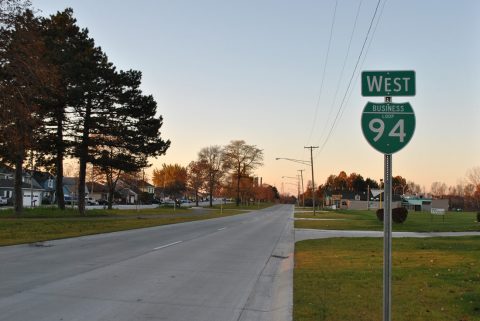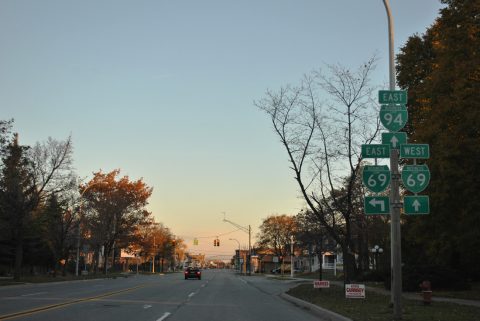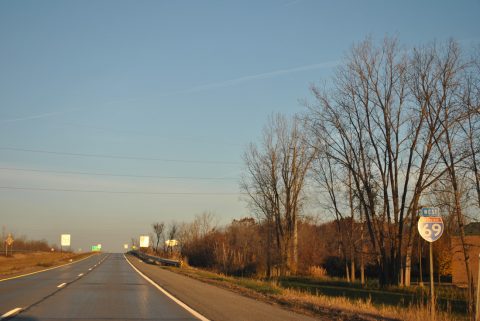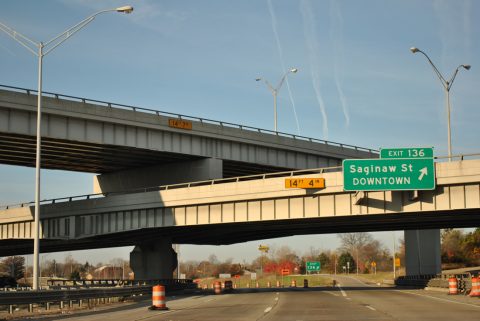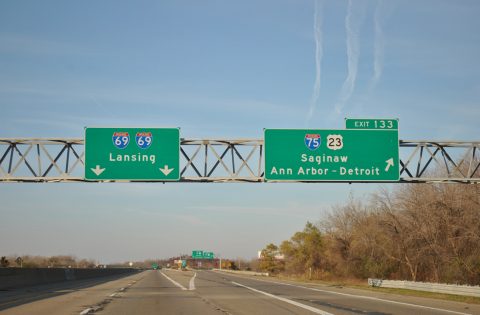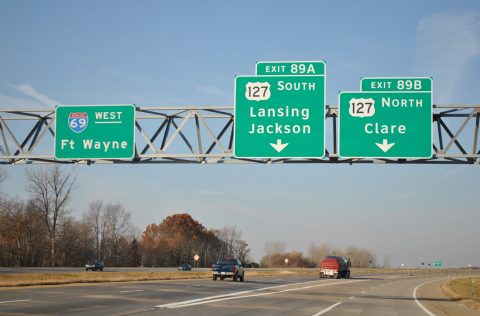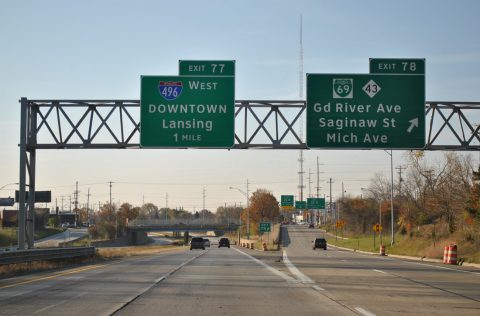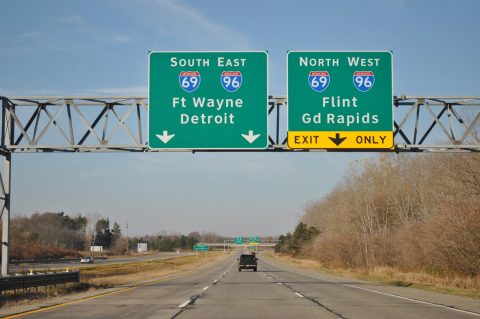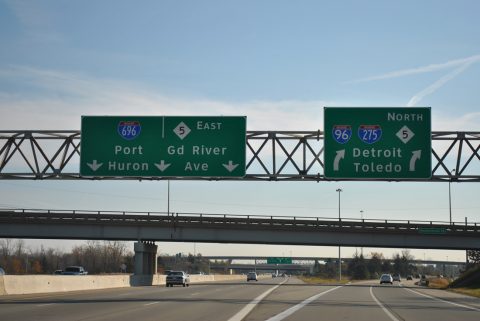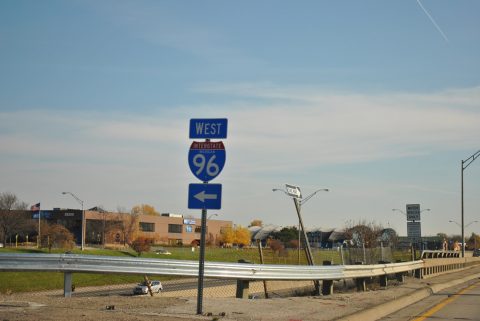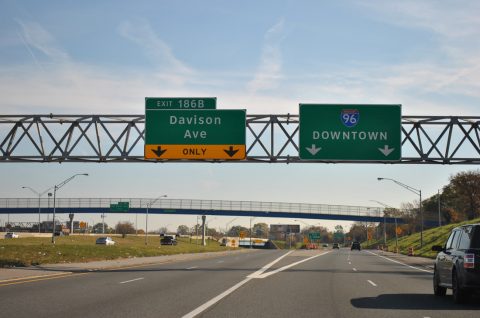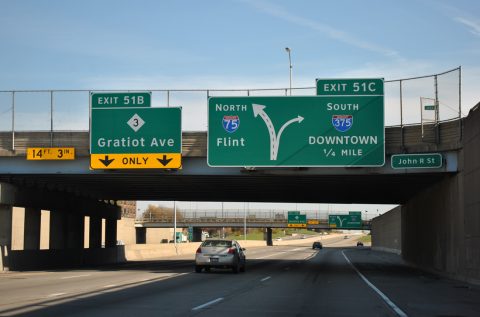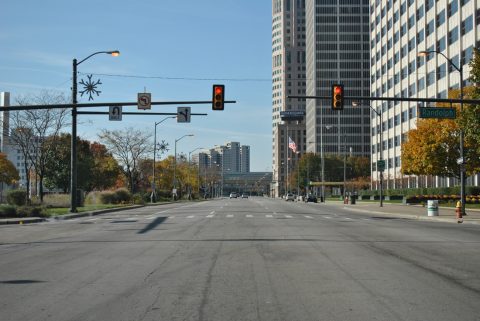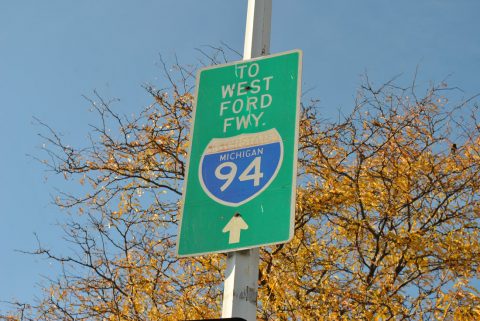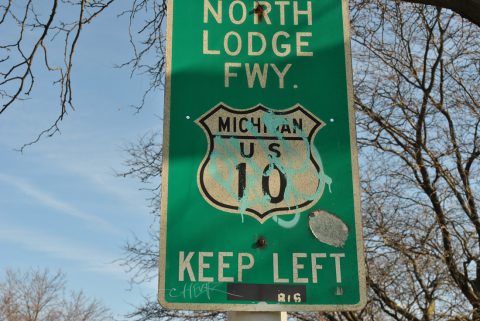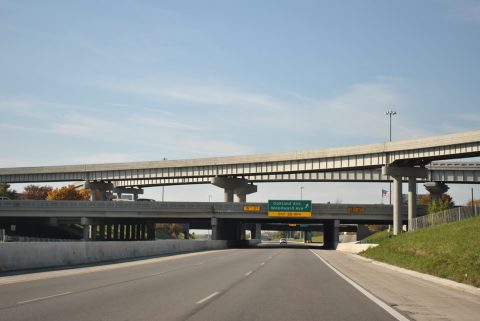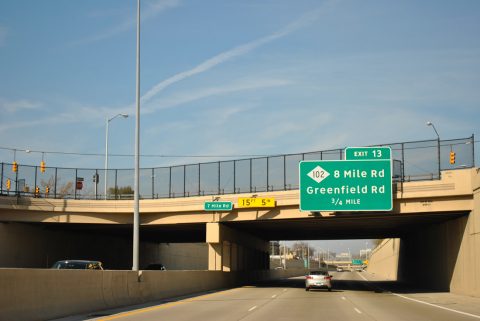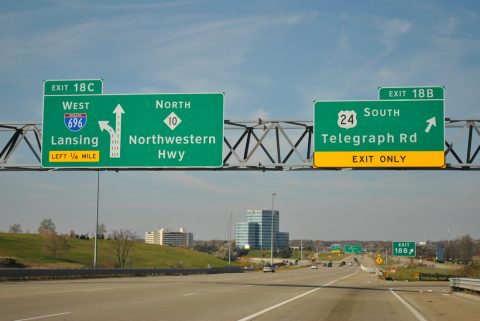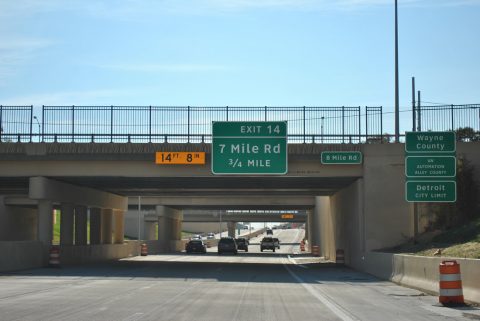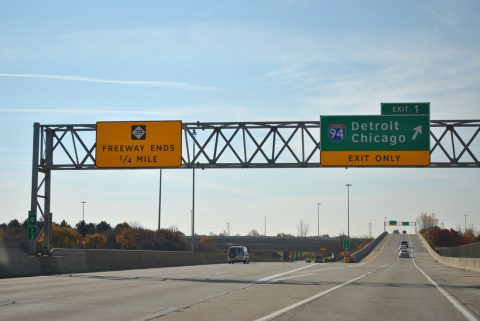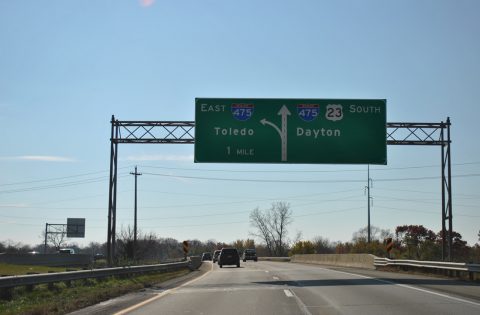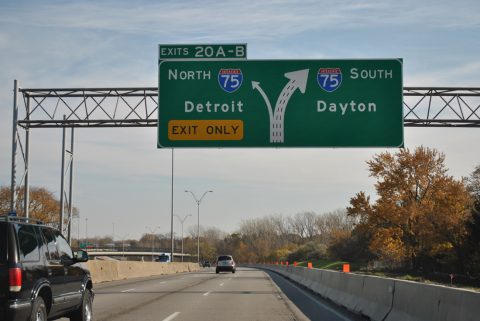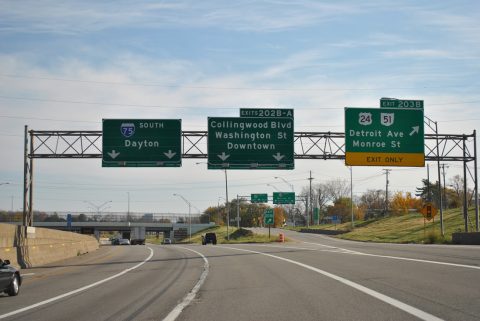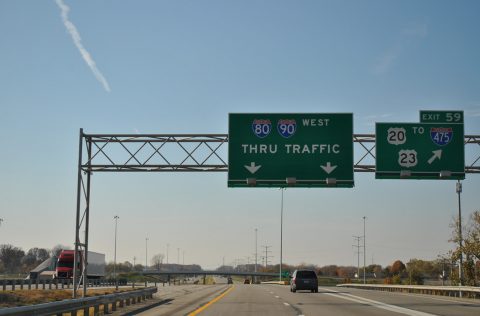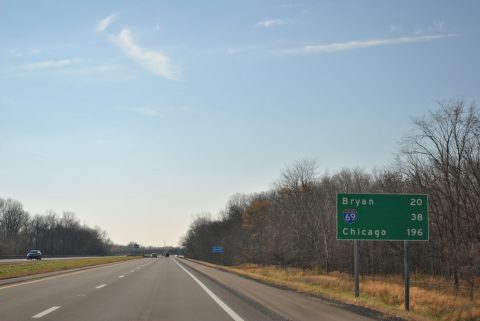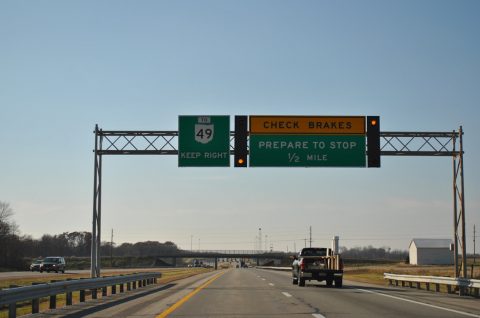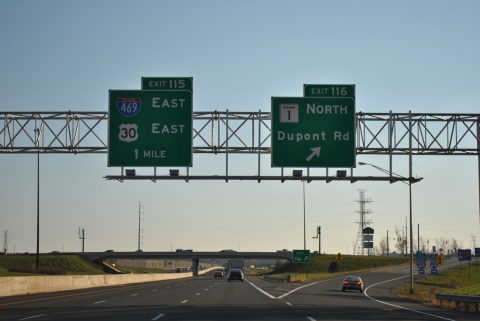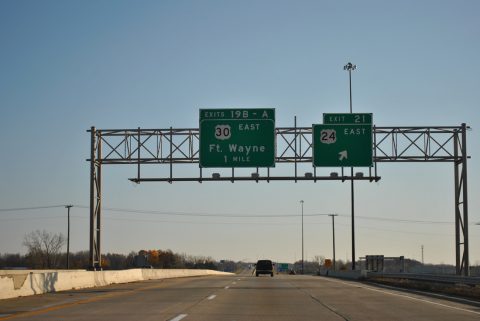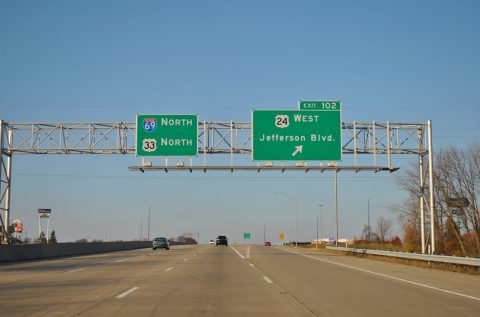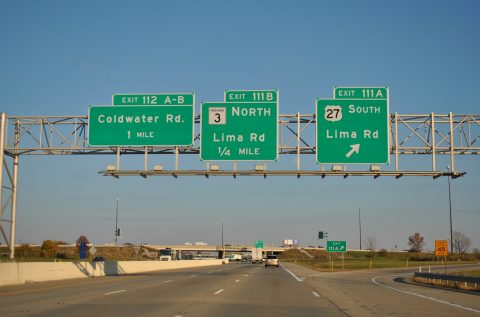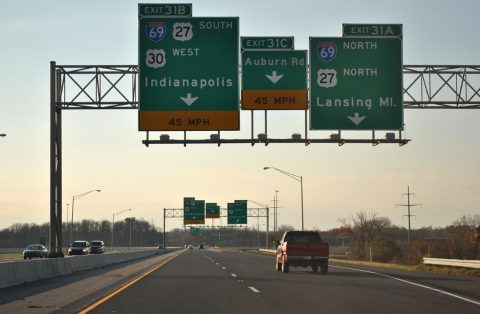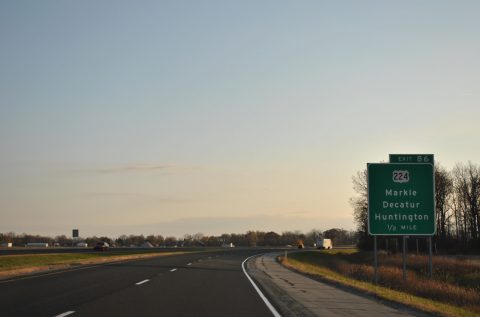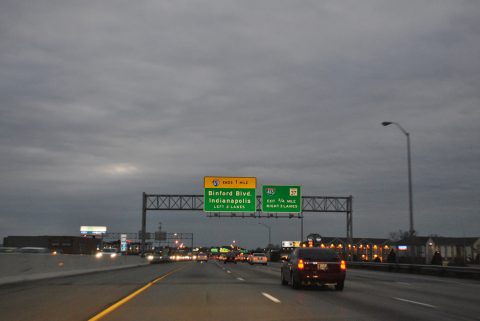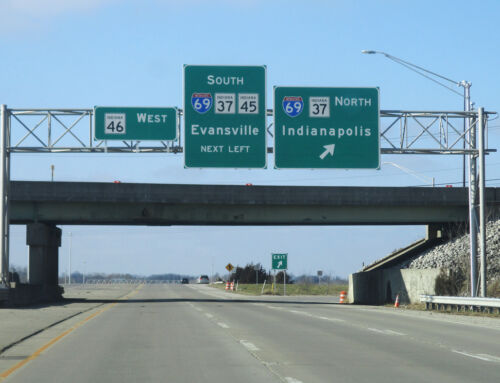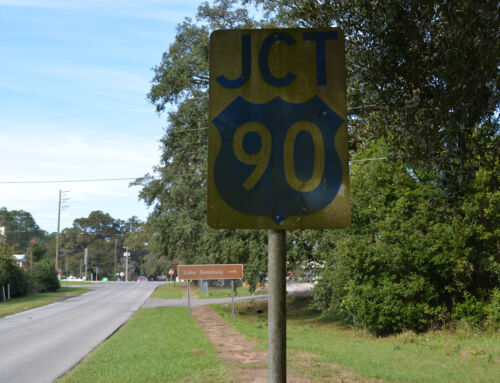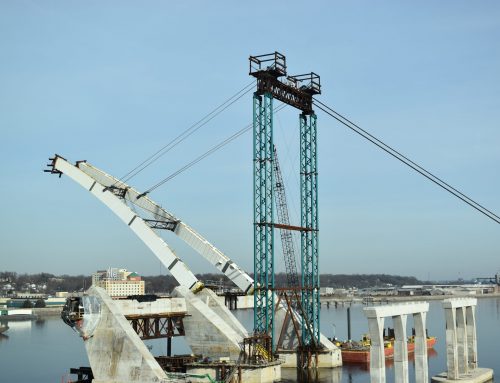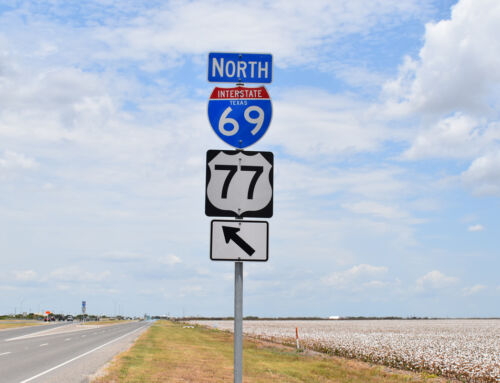U.S. 25 was decommissioned in Michigan in 1973, leaving former stretches of the road as M-125 (Ohio to just north of Monroe), M-3 (Downtown Detroit to Chesterfield Township), Business Loop I-94 (through Port Huron), and M-25 (north of Port Huron) along with portions of U.S. 24, I-75 and I-94. This view looks at a reassurance shield assembly at Marysville, a town bordering Port Huron.
Interstate 69 and 94 combine at Port Huron for an overlap to the Bluewater Bridge to Sarnia, Ontaro. Like, I-94, Interstate 69 sees a business loop of its own. Following an expressway to the one-way street couplet of Oak / Griswold Streets, the loop begins via a wye interchange from where I-94 and 96 combine to a merge with Business Loop I-94 at Main Street. The two continue north to end at I-69/94 by the bridge to Canada. BL-69 in Port Huron follows old M-21 (truncated to Flint by 1985).

Interstate 69 southbound ahead of I-475 at Flint. Note the custom Michigan font on the Interstate shield for Exit 137.
Much of Flint is orientated in a north-south fashion along the Interstate 75 and U.S. 23 corridors. Interstate 69 bisects the area, meeting Interstate 475 southeast of downtown. Interstate 475 travels 16.87 miles and was completed in 1981. It heralds to a time when Flint was a booming automobile manufacturing center.
U.S. 127 constitutes a freeway from Jackson to St. Johns. By 2002, the designation was extended northward over U.S. 27, as officials from both Indiana and Michigan agreed to truncate the route north of Ft. Wayne. U.S. 127 ends at I-75 near Grayling, MI and Chattanooga, TN, tallying 758 miles.
Interstate 96 joins Lansing with Detroit by way of an overlap with Interstate 275 between Novi and Plymouth. I-96 merges with I-275 south at a pervasive interchange that joins Interstate 696 (W.P. Reuther Freeway) with M-5 (north and east). Originally I-96 followed the M-5 freeway to Grand River Avenue, ending as Business Spur I-96 leading east to downtown.
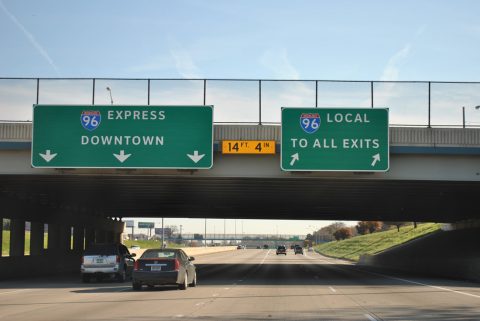
Interstate 96 widens to incorporate a local/expressway configuration from Exit 180 (Outer Drive) east to Exit 186B (Davison Avenue).
The express carriageways only see slip ramps onto the local carriageways and otherwise are exit free. Speed limits vary between the two roadways with the express lanes seeing a 70 mph limit and the local lanes a 55 mph limit.
The arterial connects the Chrysler Freeway with the beginning of the John C. Lodge Freeway (M-10). Midway between the two freeway end points is Woodward Avenue (M-1) and the entrance to the Windsor Tunnel to Ontario, Canada. The Tunnel opened in 1930 and carries a $4.00 cash toll.
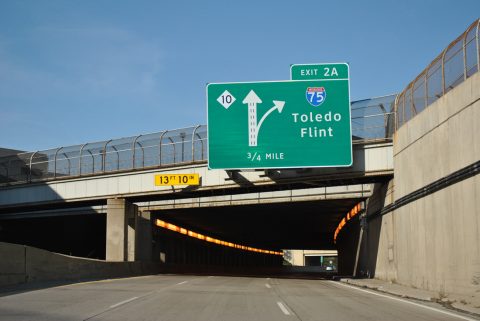
A series of tunnels carry the beginning of M-10 (John C. Lodge Freeway) under COBO Center and Fort Street (M-3) ahead of the exchange with Interstate 75.
M-10 follows all of the John C. Lodge Freeway from downtown Detroit to Interstate 696. The highway number is a vestige of its days as the final stretch of U.S. 10. U.S. 10 was truncated from Detroit to Bay City in 1986.
State-named shields are extremely rare in Michigan as a whole, but they are more of an uncommon occurrence in Detroit, as many city-installs still function today. A crop of Interstate 94 signs referring to the road as the Ford Freeway remain in service near the M-10 freeway.
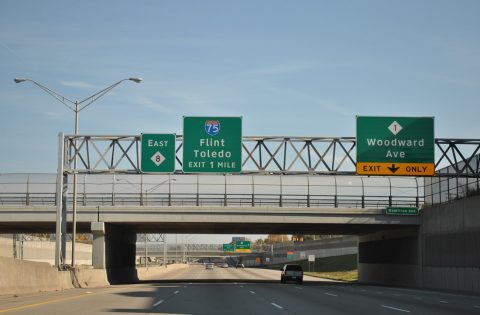
Traveling east along the M-8 (Davison Freeway) between Michigan 10 and the Woodward Avenue (M-1) off-ramp.
The Davison Freeway connects two sections of Davison Avenue through Highland Park. Constructed in 1944, the trenched freeway traveled a short distance, but was proposed to run west to the Jeffries at U.S. 16 and east to Mt. Elliot Avenue and south to the current path of Interstate 94.4 The freeway was a locally maintained facility until 1997, when MDOT took control of the route and modernized it.4
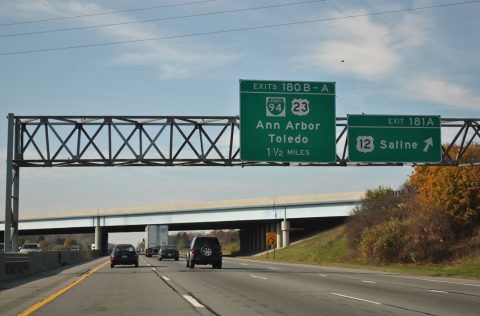
Interstate 94 & U.S. 12 combine for four miles to bypass Ypsilanti. The two part ways at Saline, just east of the I-94 interchange with U.S. 23 at Ann Arbor. Forthcoming Exit 180B doubles as the westbound beginning of Business Loop I-94 through Ann Arbor as well, with the loop following the US 23 freeway briefly north to Washtenaw Avenue.
Construction is underway (http://www.dot.state.oh.us/districts/D02/Documents/Misc/07272010InfoMeeting.pdf) along Interstate 475 east leading toward the terminus with Interstate 75 (Exits 20A/B). Work involves upgrading the interchange between the two freeways, widening I-75 north from I-475 to six lanes, and adding a new diamond interchange with ProMedica Parkway that replaces the Exit 19 off-ramps to Ohio 120 (Central Avenue) and on-ramps from Kelly and Upton Avenues. Completion is expected in fall 2013 on the $63.88-million project.
U.S. 24 is presently being upgraded to expressway standards from Fort Wayne east to the Ohio State line as part of the Fort to Port corridor. Visible just east of I-469 were concrete carriageways of the future four-lane highway.
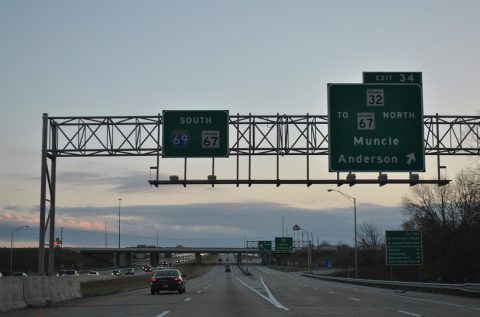
Indiana 67 joins Interstate 69 south from an expressway extending the Muncie Bypass west to Daleville.
Indiana 67 follows I-69 south to Pendleton. See Thomas Decker’s guide on AARoads for photos of the Muncie Bypass.
SR 37 follows the freeway from Exit 6 south to join I-465 in an implied overlap along the east side of the city. Presumptive renumbering will redesignated Exit 0 to 184 when I-69 is extended southwest from Indianapolis to Evansville in the coming years, bringing the total mileage in the state to 341.6
Sources:

